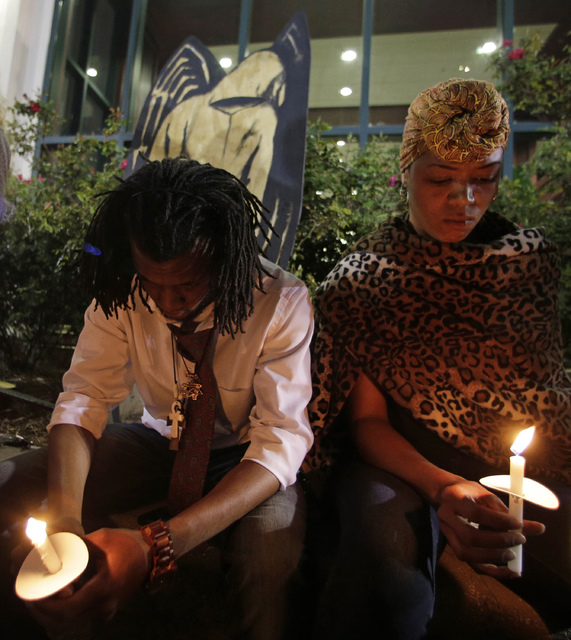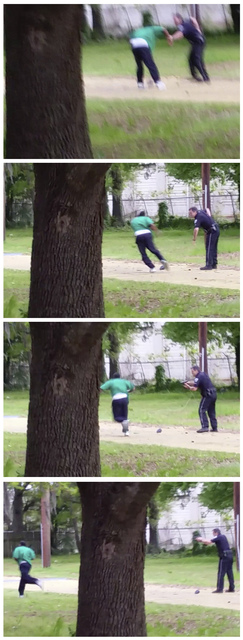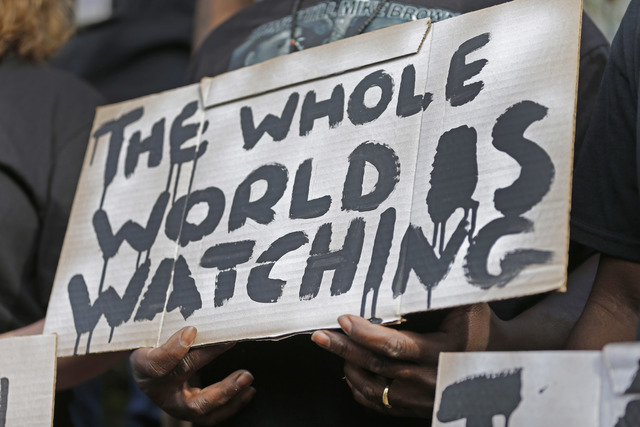NEW YORK — A bystander’s video proved pivotal in the filing of a murder charge against a South Carolina police officer, and also rekindled a fervent national discussion about the use of body cameras by police officers. ADVERTISING NEW YORK
NEW YORK — A bystander’s video proved pivotal in the filing of a murder charge against a South Carolina police officer, and also rekindled a fervent national discussion about the use of body cameras by police officers.
The White House seized on the case to make a pitch for wider use of such cameras. So did New York Mayor Bill De Blasio, whose city has experienced wrenching controversies related to police use of force.
And in North Charleston, South Carolina, where a white police officer fatally shot an unarmed black man in the back, Mayor Keith Summey said Wednesday that every uniformed officer on patrol will get a body camera. The city already had ordered 101 cameras, and is ordering 150 more in the aftermath of the shooting, the mayor said.
It’s unclear how quickly they’ll be deployed. Summey said officers have to be trained and a policy for the use of the cameras must be written and approved by lawyers.
In many jurisdictions nationwide, there have been complications and disagreements related to details of such policies. In some states, lawmakers have proposed bills to exempt video recordings of police encounters with citizens from state public records laws, or to limit what can be made public.
Paul Butler, a former federal prosecutor who is now a professor of criminal law at Georgetown, said use of a body camera in North Charleston might possibly have spared the life of 50-year-old Walter Lamer Scott, who was shot and killed Saturday by Patrolman Michael Thomas Slager after a routine traffic stop.
“They make both police and civilians treat each other better, because they know they are being recorded,” Butler said. “If the police officer knew he was on camera, he may have been deterred from firing his weapon at a fleeing suspect.”
In New York City, de Blasio described the South Carolina video as “so disturbing and so painful” and said it fueled his interest in expanding the use of police body cameras in New York.
“We’re seeing things in a different light now that we have so much more video,” he said. “Things in the past that may have been mischaracterized, we’re now seeing very starkly, very honestly. And I believe that will lead to progress.”
In Washington, White House spokesman Josh Earnest suggested that greater use of body cameras could help improve community/police relations.
“Even the investigators themselves have acknowledged that when this video evidence was presented, that it changed the way that they were looking at this case,” Earnest said. “I do think that is an example of how body cameras worn by police officers could have a positive impact in terms of building trust between law enforcement officers and the communities that they serve.”
President Barack Obama has proposed a $75 million program to help law enforcement agencies buy the cameras.
The North Charleston video was provided to the dead man’s family and lawyer by a witness later identified by NBC News as Feidin Santana. It shows Slager dropping his stun gun, pulling out his handgun and firing at Scott as he runs away. Scott falls after the eighth shot, fired after a brief pause.
Charleston County Sheriff Al Cannon suggested that investigators would have ascertained Slager’s culpability without the video, but the images made their job easier.
“Like the family attorney said, once that video came out, things moved quickly,” Cannon said.
The swift and forceful response contrasted sharply with how events unfolded after the Rodney King beating and the chokehold death of Eric Garner in New York City last July — two other cases in which videos of the police action emerged.
King’s 1991 beating by club-wielding Los Angeles police officers was depicted in a videotape made by a man who witnessed the incident from his balcony. After four officers were acquitted in a state trial, the Justice Department filed federal civil rights charges and won convictions against two of them in 1993.
In the Garner case, a grand jury decided not to indict Police Officer Daniel Pantaleo, who was involved in the fatal confrontation with the 350-pound black man. A video shot by a bystander showed Pantaleo trying to arrest Garner on suspicion of selling untaxed cigarettes, then wrapping his arm around Garner’s neck and — along with other officers — pulling him to the ground.
Garner can be heard repeatedly saying, “I can’t breathe,” before he goes limp. A medical examiner later ruled that a chokehold, along with Garner’s poor health, resulted in his death.
In another explosive case last year — the fatal shooting of 18-year-old Michael Brown by a white officer in Ferguson, Missouri — there was no video of the fatal shots. As in the Garner case, a grand jury declined to indict the officer.
Paul Butler, the Georgetown law professor, said the South Carolina video may have a profound impact.
“In the African-American community, we’ve known of episodes like this for decades, but until there’s graphic video like this, our stories have not been believed,” Butler said. “Now people are seeing what we’re talking about … how police literally treat black people like non-human animals.”





